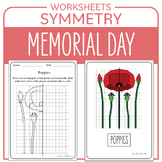16 results
Free high school calculus internet activities

PHET Vector Lab (Online Simulator)
I created this lab as an intro into two dimensional motion for my physics classes. The lab uses all the techniques of adding vectors head-to-tail and demonstrates for them that the two vectors being added to make a resultant are the components of that resultant. This lab is great practice and very self-explanatory for grades 11 and 12. I created this lab so that it was an electronic lab so that they could open the lab on their computers, fill out the lab in MS Word, and submit it back to me onli
Subjects:
Grades:
11th - 12th, Higher Education

Definite Integrals GMAT
This formative activity makes it easy for the teacher to see how students are doing with definite integrals. Questions are on various level, 1 to 5, and just by looking at students' screens you will be able to see how well they are doing. Correct answers will take students up a level, and incorrect answers take students down a level. Because it is a Google Form, the owner is able to see correct answers. There are 34 non-calculator questions in total.
Grades:
11th - 12th
Types:

Calculus Limits from Graphs DIGITAL EXIT TICKET
Need a quick formative assessment to check your students' understanding of Limits from Graphs? Try this 8-question, self-grading Google Form Exit Ticket. This could also be used as a wrm-up.This product corresponds perfectly with the all-inclusive Intro to Limits Lesson.The google form is ready to go - no prep needed. The questions will be graded for you and you have the option to allow your students to get instant feedback.You will need to have a Google account to access the Google form and see
Subjects:
Grades:
11th - 12th, Higher Education
Types:
Also included in: Calculus Full Curriculum BUNDLE
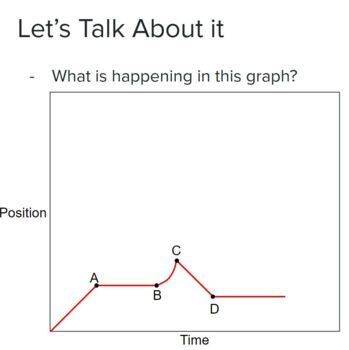
Position Time Lesson
This Google Slide presentation includes Pear Deck slides. Provided are four examples of different position time graphs with detailed explanations of how the PT graph relates to the velocity and acceleration of the object being represented. We relate PT graphs to the Rate of Change (the derivative) of the line. Rate of change is explained as slope and is touched on again, briefly, in these slides.I found that this method of teaching Position Time graphs was the most effective method with my Fresh
Subjects:
Grades:
9th - 12th
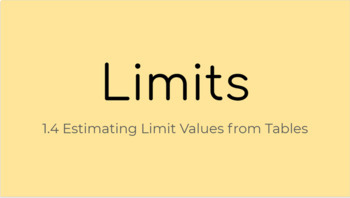
Topic 1.4 Estimating Limit Values from Tables (For Nearpod in Google Slides)
In this Nearpod lesson, students will watch a short video to learn how to estimate limits from tables, then apply their knowledge in practice problems. As the lesson progresses, students will also be introduced to discontinuities and complete the lesson with challenge problems.
Subjects:
Grades:
11th - 12th
Types:

Topic 1.3 Estimating Limits from Graphs (for Nearpod in Google Slides)
In this nearpod lesson, students will learn how to estimate limits graphically. Warm-Up Question: Students will translate a sentence into limit notation. Review: Students will review proper limit notation. Part One: Graphical Limits Video: Finding Limits Graphically Essential Knowledge Review & check for understanding questions. Video: When does a limit NOT exist? Part Two: Student Practice 2 Graphical Limits Problems and 1 Error Analysis Part Three: AP Exam Practice 3 Problems model
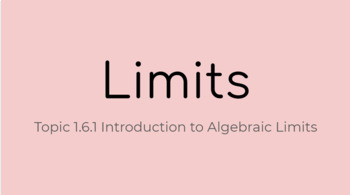
Topic 1.6 Part 1: Introduction to Algebraic Limits (Nearpod in Google Slides)
Students will take notes on an algebraic limit flowchart. Then, they will practice finding limits at continuous points of the function. Finally, they will use the plug in method to classify whether a function is continuous, has a vertical asymptote, or the limit results in indeterminate form. Topic 1.6 Part 2 will cover vertical asymptotes and the sign test while Topic 1.6 Part 3 will cover indeterminate limits.
Subjects:
Grades:
11th - 12th
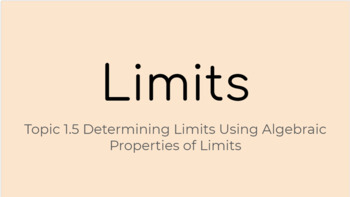
Topic 1.5 Using Algebraic Properties of Limits (for Nearpod in Google Slides)
In this nearpod, students will begin by adding to their notes the sum limit theorem, the difference limit theorem, the product limit theorem, the quotient limit theorem, and the composite limit theorem. Students will then move to part two of the lesson: Which limit theorem do I use? where they will share out which hints in each expression tell them which limits to use. They will end the lesson with mixed practice where they are provided a table of limits and must use limit theorems to determine

Power Rule for Derivatives (Part One) For Nearpod in Google Slides
In this Nearpod Lesson, students will learn how to take the derivative of any power function using the Power and Constant Multiple Rule. This lesson is designed for virtual calculus classrooms hosted over Zoom. No timers are set for the activities, so you can set the pace for your class.
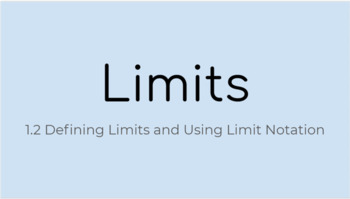
Topic 1.2 Defining Limits and Using Limit Notation (Nearpod in Google Slides)
In this 38-slide nearpod lesson, students will be introduced to limits and limit notation. Part One: Defining Limits Students will write down the formal definition of a limit, limit notation, and then watch a 3 minute video to understand better understand what they wrote. Part Two: One-Sided Limits Students will learn the notation for left and right-handed limits. Part Three: Limit Notation Students will translate sentences into limit notation.Exit Ticket: Students will estimate limit values fro

Digital Discontinuity Card Sort - Designed for distance learning!
This contains 10 different functions that students sort into different columns based on whether the function is continuous or has a jump/removable/infinite discontinuity.I have two versions of this activity attached. One version is designed for distance/hybrid learning, and the other is designed for in-person ("normal") learning. Both of these versions contain the same cards. Refer the file titled "READ ME - Discontinuity Cards Activity Overview" if you need clarification regarding the purpose o
Subjects:
Grades:
11th - 12th

3D Graphing on iPad, iPhone, or iPod (with browser alternatives)
The 3D Graphing lesson is a fun and entertaining lesson that helps students visualize systems of equations and relate 2 dimensional space to 3 dimensional space. The lesson uses iPad, iPhone, or iPod as the platform, but may optionally be presented on computers with internet access.
Subjects:
Grades:
11th - 12th, Higher Education
Types:

Integral Visual - EDITABLE DESMOS FILE
This Desmos page can be used as an exploration to discuss the idea of negative integrals. It also gives students a chance to understand the difference between area below the x-axis and swapping the order of endpoints when integrating.
Subjects:
Grades:
10th - 12th

Interactively Explore the Maclaurin Expansion of sin(x)
Use the Math Dynamics Function Pallet to interactively explore the Maclaurin Expansion Series to calculate the sin for any angle. The only other way to find the sin of an angle is to physically measure it or look it up in a table of previous calculated values, like a Slide Ruler.Includes a Slide Show to explain the technique to do just this.
Subjects:
Grades:
12th, Higher Education, Adult Education
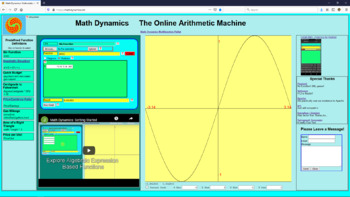
A Treatise on Trigonometry
Trigonometry is based on the fundamental principle of ONE length. The length in this context is immaterial because with Trigonometry we only need be concerned about ONE. For example if you draw a circle it is ONE circle no matter how big or small. Because it is a circle it has only ONE center with a constant distance to the edge of the circle. This constant distance is ONE and is called the Radius.
Subjects:
Grades:
12th, Higher Education, Adult Education

Power Rule for Derivatives (Part Two) For Nearpod in Google Slides
In this lesson, students will learn how to use the power rule to derive reciprocal functions.
Showing 1-16 of 16 results

